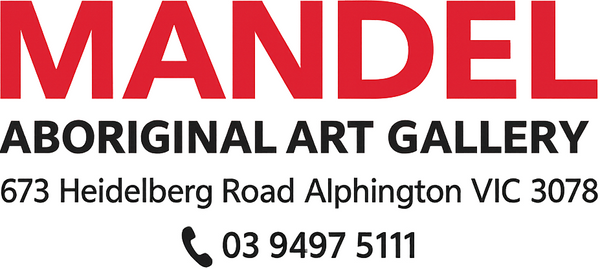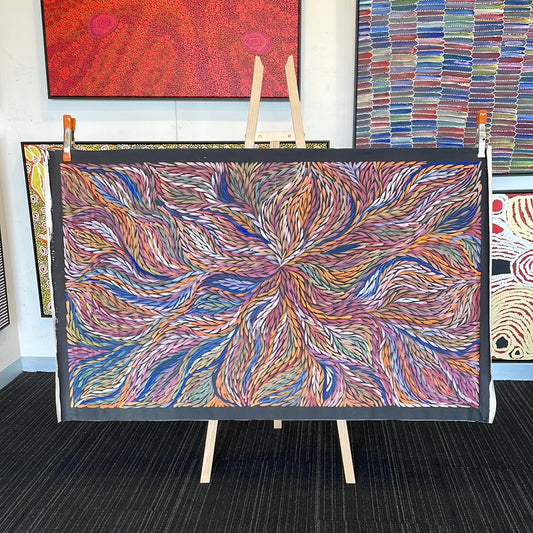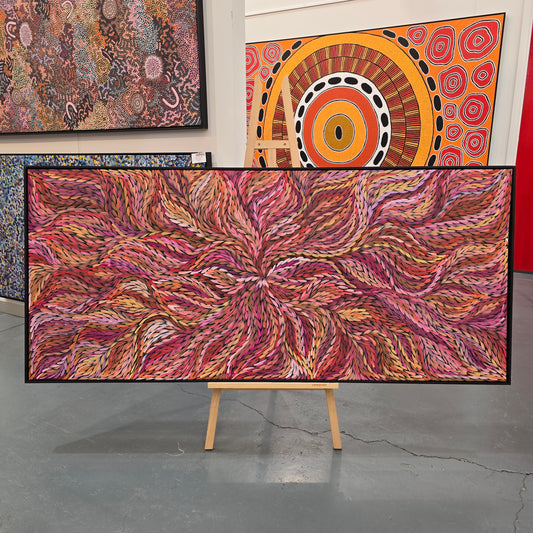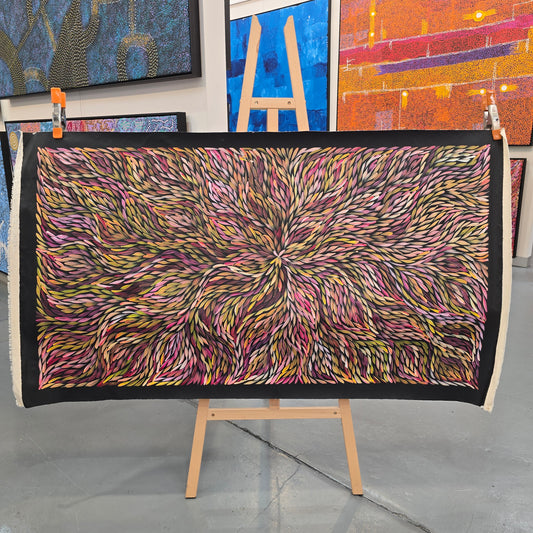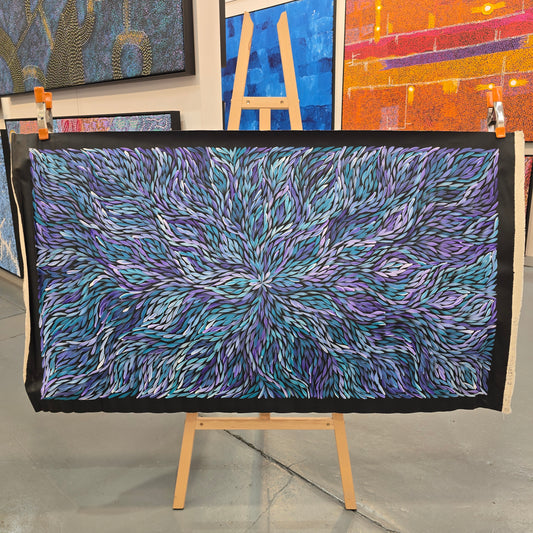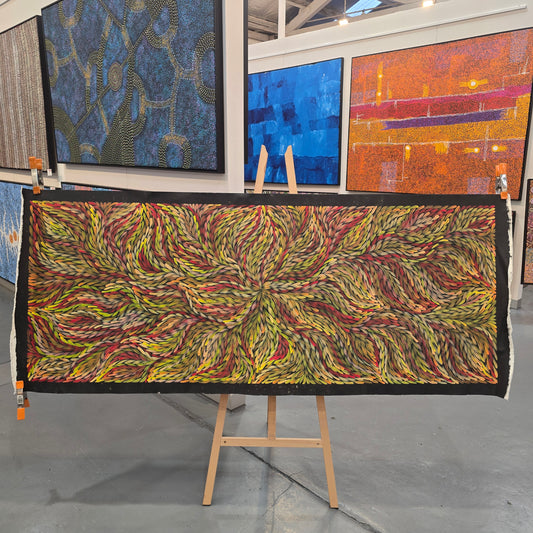Collection: Rosemary Petyarre
-
Rosemary Petyarre 900 mm x 1500 mm
CODE : 6964Vendor:Rosemary PetyarreRegular price $2,900.00 AUDRegular priceUnit price / per -
Rosemary Petyarre 760 mm x 970 mm
CODE : 9181Vendor:Rosemary PetyarreRegular price $1,750.00 AUDRegular priceUnit price / per -
Rosemary Petyarre 1300mm x 1970mm
CODE : 7086Vendor:Rosemary PetyarreRegular price $5,200.00 AUDRegular priceUnit price / per -
Rosemary Pitjara 900 mm x 2000 mm
CODE : 7213Vendor:Rosemary PetyarreRegular price $2,990.00 AUDRegular priceUnit price / per$4,300.00 AUDSale price $2,990.00 AUDSale -
Rosemary Petyarre 960 mm x 1530 mm
CODE : 4899Vendor:Rosemary PetyarreRegular price $2,900.00 AUDRegular priceUnit price / per -
Rosemary Petyarre 1300 mm x 2000 mm
CODE : 7215Vendor:Rosemary PetyarreRegular price $4,700.00 AUDRegular priceUnit price / per -
Rosemary Petyarre 780 mm x 1450 mm
CODE : 9233Vendor:Rosemary PetyarreRegular price $2,200.00 AUDRegular priceUnit price / per$2,900.00 AUDSale price $2,200.00 AUDSale -
Rosemary Petyarre 800 mm x 1400 mm
CODE : 9230Vendor:Rosemary PetyarreRegular price $2,200.00 AUDRegular priceUnit price / per$2,900.00 AUDSale price $2,200.00 AUDSale -
Rosemary Petyarre 890 mm x 930 mm
CODE : 7091Vendor:Rosemary PetyarreRegular price $1,800.00 AUDRegular priceUnit price / per -
Rosemary Petyarre 1100mm x 2000 mm
CODE : 7349Vendor:Rosemary PetyarreRegular price $4,200.00 AUDRegular priceUnit price / per -
Rosemary Petyarre 900 mm x 2000 mm
CODE : 7044Vendor:Rosemary PetyarreRegular price $4,200.00 AUDRegular priceUnit price / per -
Rosemary Petyarre 1500mm x 2370mm
CODE : 7002Vendor:Rosemary PetyarreRegular price $5,500.00 AUDRegular priceUnit price / per -
Rosemary Petyarre 900 mm x 2000 mm
CODE : 7097Vendor:Rosemary PetyarreRegular price $3,800.00 AUDRegular priceUnit price / per -
Rosemary Petyarre 870 mm x 2000 mm
CODE : 7008Vendor:Rosemary PetyarreRegular price $3,600.00 AUDRegular priceUnit price / per -
Rosemary Petyarre 760 mm x 2000 mm
CODE : 7177Vendor:Rosemary PetyarreRegular price $3,500.00 AUDRegular priceUnit price / per -
Rosemary Petyarre 870 mm x 900 mm
CODE : 7167Vendor:Rosemary PetyarreRegular price $1,300.00 AUDRegular priceUnit price / per$1,990.00 AUDSale price $1,300.00 AUDSale
About Rosemary Petyarre
Artist Name: Rosemary Petyarre
Date of Birth: c. 1945
Region: Utopia, North East of Alice Springs, Northern Territory, Australia
Language: Anmatyerre
Who is Rosemary Petyarre?
Rosemary Petyarre is a renowned Australian Aboriginal artist and a native of the Anmatyerre tribe of the Utopia area in the Northern Territory. Petyarre is well known for her unique and detailed paintings of outback Australia as well as the aboriginal lore and traditions of the desert and plains; many of her paintings capture the sacred symbiosis of her people and the land. Her paintings, which are commonly based on motifs stemming from the “Awelye” (ceremonial painting of the female body) or the “Dreaming,” have been embraced in the native country as well as all over the world.
Rosemary Petyarre’s Early Life and Background
Rosemary Petyarre was born around 1961 at Atnangkere, an ancient aboriginal site in the Utopia area, east of Alice Springs, the capital city of Australia’s Northern Territory. As with so many other artists from this area, Petyarre was raised within the cultural heritage of the Anmatyerre tribe. From elders, she learns cultural aspects about dreaming stories, ceremonies and the natural world which formed the important basis of her learning process.
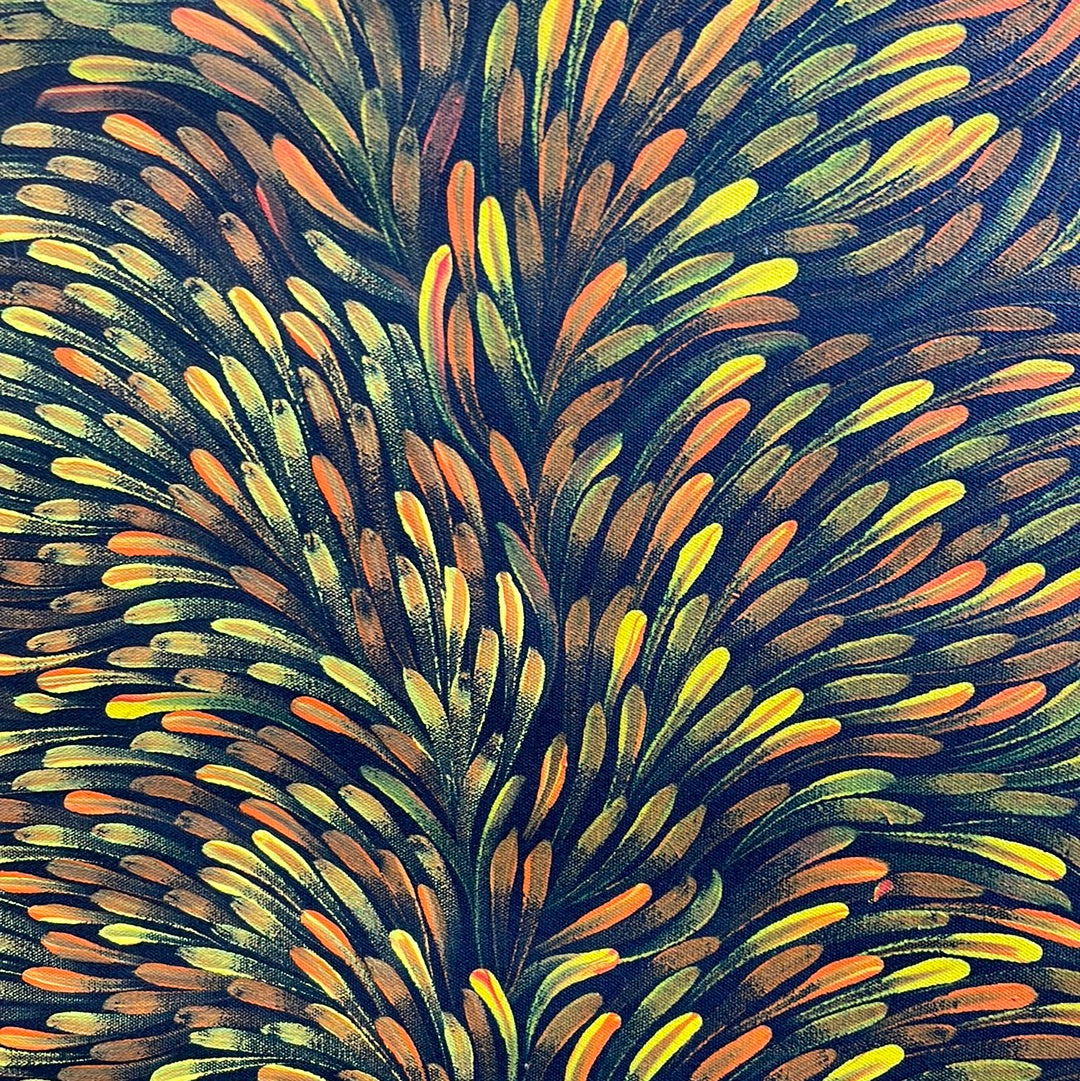
The late twentieth century saw a vitalisation of art production in the region central to utopia, home to some of the most famous aboriginal artists. Petyarre is related to many other famous artists; her aunt is Emily Kame Kngwarreye, a leading icon of the Aboriginal art scene whose work is pioneering in nature.
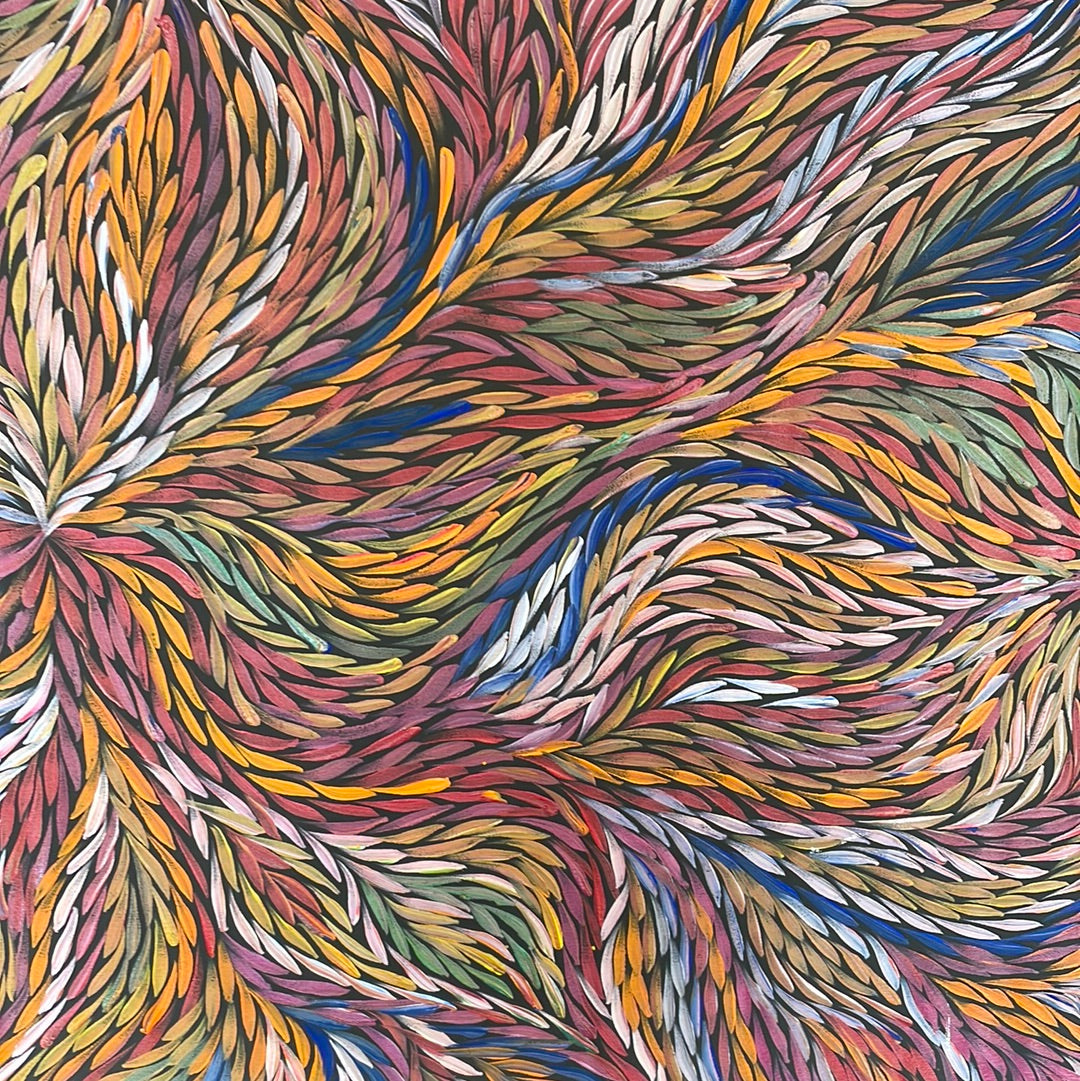
Petyarre's Artistic Journey
Petyarre began painting in the late 1970s as a participant in a community batik project, a method that was popular among the Utopia artists during that period for use on fabric. It is the batik movement that first opened her to the world of arts through fabric art and writing a story on fabric. However, by the mid-eighties, she changed her medium from oil on canvas to acrylic to get a wide-edged basis of the detail of the iconic ideas that she had in mind.
Her first art productions addressed traditional ceremonial body designs and Dreaming stories from the area regarding bush medicine, seeds, and other aspects of the changing seasons in the district. Through her art, Rosemary depicted his people’s culture firmly rooted in their surroundings. In due course, her unique signature developed and she is noted for graceful curves, rhythmic dots and lines that gave a feeling of motion that portrayed the spirit of the Australian desert.
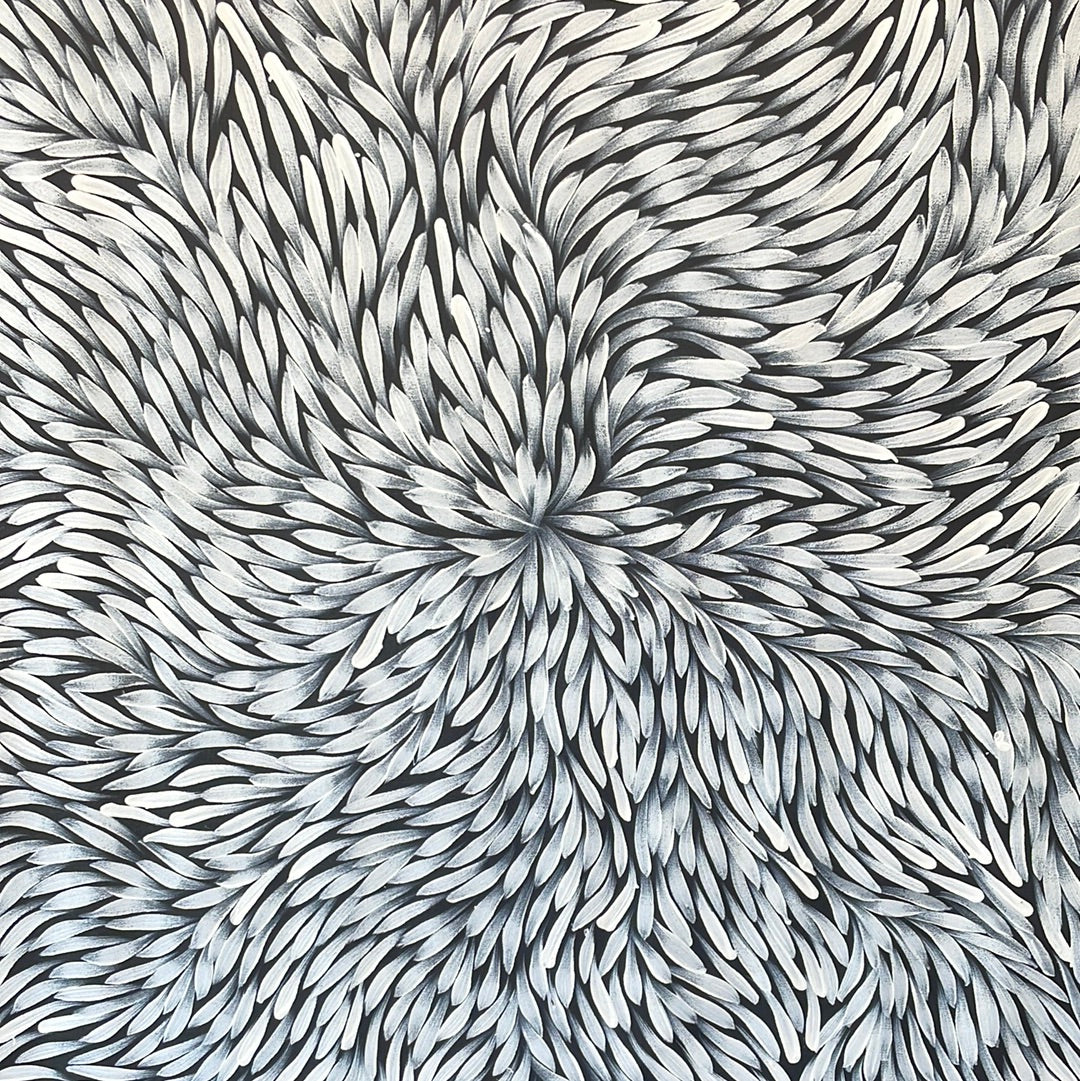
Themes and Symbolism of Artworks of Rosemary Petyarre
The paintings found in the artwork of Petyarre are consistent with the cosmological beliefs of the traditional Anmatyerre people. Some of the main topics captured in most of her paintings concern “Medicine Leaves,” a topic that earned her considerable recognition. Medicine Leaves represents large abstract paintings with multiple thin layers of small, sheer brushstrokes in bright colours imitating the patterns on the leaves of the plants used in Indigenous American medical treatments. This series is dedicated to the bush medicines that should maintain the health of the physical and spiritual body of her people — a theme also powerfully explored in Gloria Petyarre’s artwork, which shares visual and cultural connections rooted in Utopia’s rich artistic heritage.
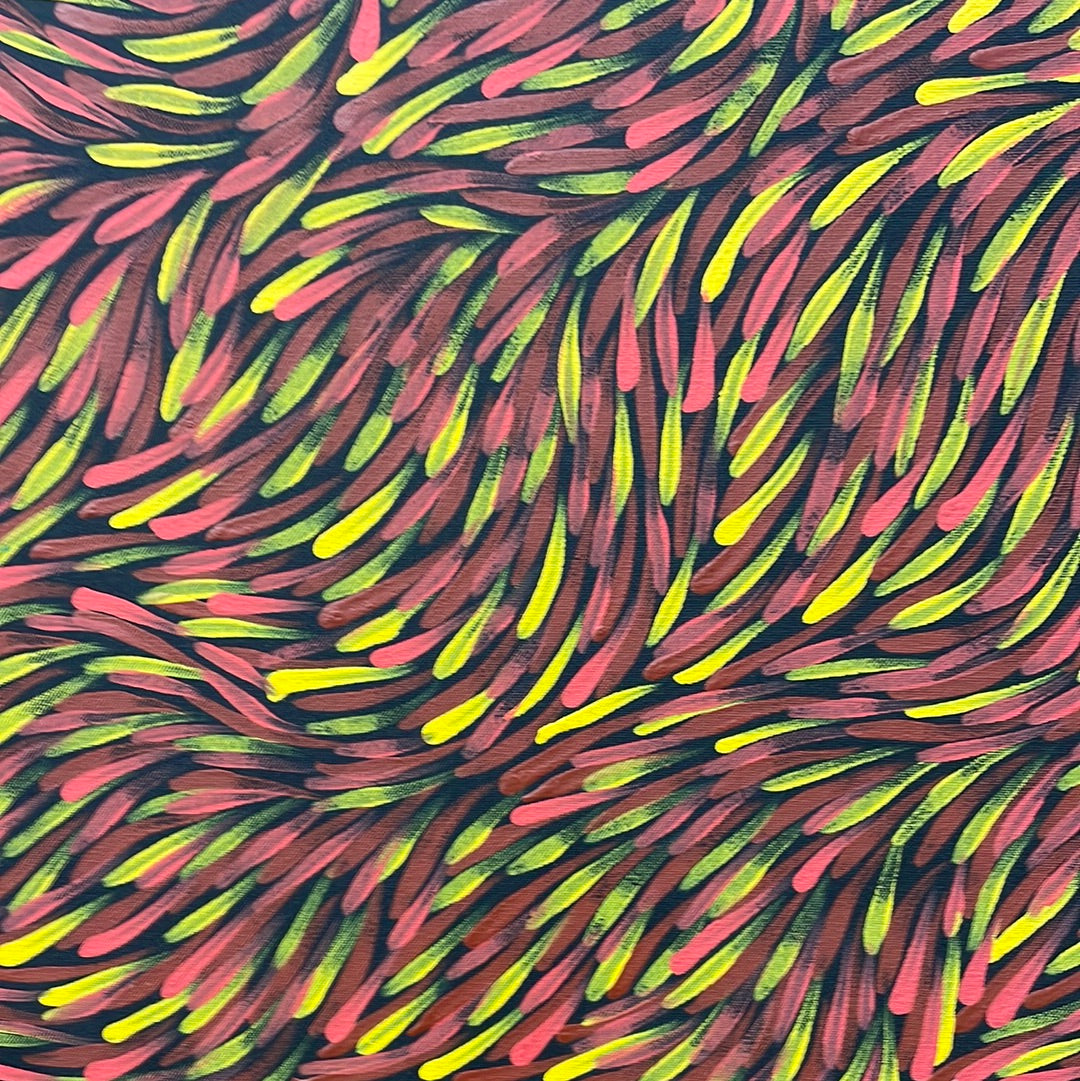
The other common theme in her works in “Awelye” refers to the body paintings that women from areas undertake during ceremonious activities. Not only traditions of aboriginal people’s population are depicted and described in these paintings, but also the continuous role of women in it.
Rosemary Petyarre’s ‘The Bush Medicine Leaves’
“Bush Medicine Leaves” is among the pieces of art for which Rosemary Petyarre is most well known. The meaning of this work extends to the artistic world as well as to culture. The “Bush Medicine Leaves” paintings show the leaves from traditional plants used by Aboriginal women as medicine. They are important for the well-being of her people, as they are used to treat different health problems and for traditional ceremonies.
In works like "Bush Medicine Leaves", Rosemary Petyarre makes many small, overlapping brushstrokes that give an illusion of shimmering and motion, like what happens with leaves in the air or when light plays on them. The artist tends to mix colors that look like real leaves, for example, lively green, earthy brown, and red and orange tones in autumn.
The purpose of these works for Petyarre is not only to look appealing; they help her share what she understands about old bush medicine and where she comes from. Their words highlight the ongoing knowledge and importance of Aboriginal women as culture keepers and healers. Bush Medicine Leaves highlights Petyarre’s skill and her steady effort to share her people’s traditional culture by painting.
Rosemary Petyarre’s Collection and Exhibition
Rosemary Petyarre’s paintings remain a subject of praise and critical analysis, and the progress of Aboriginal art, in particular, the Utopia art movement, is traced in exhibitions and catalogues.
Petyarre’s art is a tribute to her life, the legacy left behind to society, as well as a symbol of the intact relationship between the Aboriginal people and their land. She is an artist far beyond the definition and could be referred to as a weaver of stories, a cultural mediator between the world of the Aboriginal Dreamtime of the Anmatyerre people and the accepted contemporary reality.
Most of her notable exhibitions include:
- 1989 Utopia Women’s Paintings, A Summer Project
- 1990 A picture Story, 88 silk works from the Holmes à Court Collection, UK
- 1993 Central Australian Aboriginal Art & Craft Exhibition, Alice Springs NT
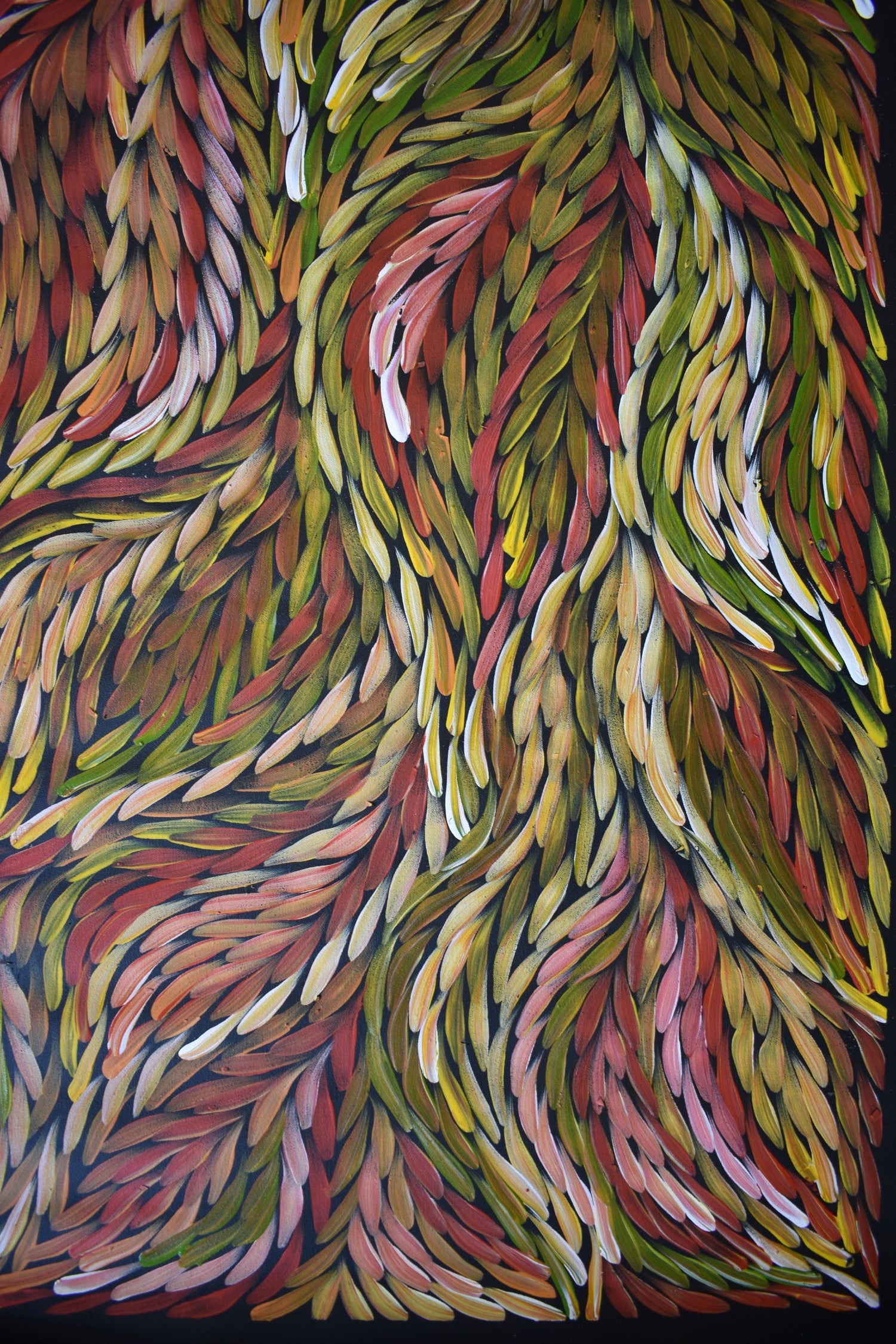
Recognition and Legacy of Rosemary Petyarre
The paintings of Rosemary Petyarre have been displayed in numerous galleries and art exhibitions within Australia and overseas with major clients in America, Europe and Asia. Some of her works are displayed in The National Gallery of Australia and at many private collections across the world.
While she made quite a name for herself around the world, Petyarre is a devoutly traditional woman until the time of her passing. As a cultural diplomat, she spread awareness of her community’s histories and made sure that aboriginal art remained truthful in its moral purpose.
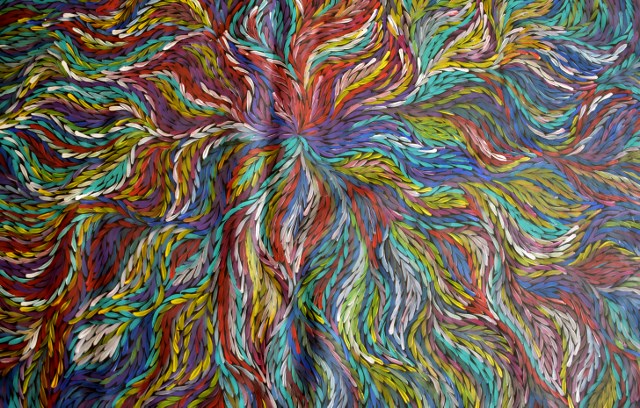
Petyarre's Personal Style and Technique
Petyarre never used any other forms of painting other than using dots, layering of colours, and blending. Her work very often created the impression of either the wind blowing or water currents, which describe the shifting terrains of her country. She painted the progress and cycles of colours of the Australian desert with what she wore.
She mingled the core cultural aspects with modern functional and aesthetic techniques thus blending the past and the present. Thus, her works are not only visually appealing and splendid but also bear certain ethnographic value.

Explore Rosemary’s Collection with Mandel Art Gallery
Rosemary Petyarre’s life and oeuvre enlighten the strong spiritual and creative practices of the Aboriginal, Australian culture. Particularly by means of her colourful and complicated paintings she has created a powerful unique painting legacy that will never allow the stories, the knowledge, and the beauty of her culture to be forgotten by the generations to come.
Discover the vibrant beauty and cultural depth of Rosemary Petyarre’s masterpieces with Mandel Aboriginal Art Gallery. Let her intricate patterns and flowing designs transport you to the heart of Australia’s sacred landscapes. Own a piece of Aboriginal heritage today and celebrate the enduring stories of the Anmatyerre people.
Contact us to further explore the collection of Rosemary Petyarre. Visit our website or call us at 03 9497 5111 to explore her canon of masterpieces.
